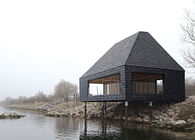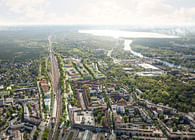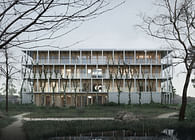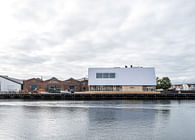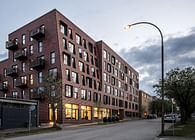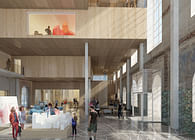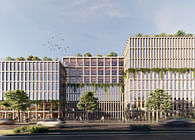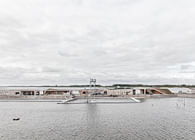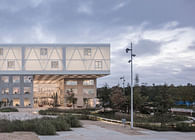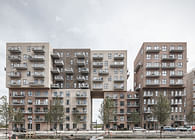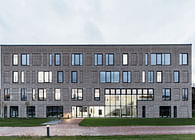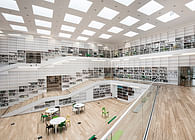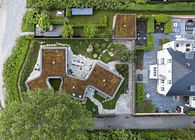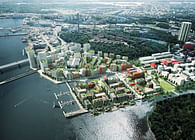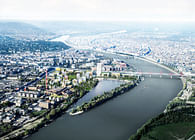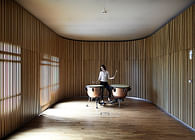
Copenhagen, DK
The new youth and senior citizens' center will become a new attraction in the listed Hammer Park. The building is designed as a pavilion in the park without any backs. Its archetypal expression with the gable roof is easily recognizable for young and old. An extended roof indicates a common meeting place and provides shelter for informal meetings or outdoor activities. Modern-looking glass facades with large openings provide an inviting appearance and allow visual and physical connections to the immediate recreation and sports areas. Wide doors from a range of features will allow activities to be extended to the park surrounds. Natural façade materials and a green roof will blend in well with the surroundings of the listed Hammer Park. In the area of the roof projection, a façade greening system ensures a flowing transition between landscape and building.
The building is designed with a modular structural grid based on glulam columns and beams with CLT ceilings and façade walls. The modular basis makes the building cheaper and easier to dismantle. It also offers the possibility to build the façade, decks and roof as modular components. The central core is made of recycled bricks and gives stability to the volume. A simple column-based structure allows for functional flexibility inside during use and for future adaptations of the building.
The façade was designed with sustainability and low maintenance in mind. An extended canopy around the building protects the façade from direct rain and snow. The façade is clad in modified Accoya wood, which offers unprecedented reliability. The surfaces directly exposed to the weather are made of galvanized steel. The building is designed with a gently sloping green roof.
The design breaks with the idea of a linear value chain that starts with the extraction of resources and ends as waste. The project is designed with solutions that have the least possible impact on the environment, have low life-cycle costs and provide a high level of comfort to the building's occupants by focusing on the indoor environment. The better low-energy buildings ensure the sustainable operation of a building, the more important the construction of a building becomes for the consideration of the overall carbon footprint. During the further design phase comparative LCA calculations expose alternatives from an environmental point of view in order to optimize the design and materials of the building.
The building is designed with structural elements made of wood and a façade cladding made of Accoya wood. Where possible, bio-based insulation is used. The central stabilizing core is thought to be constructed from recycled bricks from existing buildings. Further CO2 reductions can be achieved through lightweight clay-based walls. A building in which solar shading, energy generation, climate adaptation and natural ventilation are an integral part of the design. The photovoltaic system on the south roof primarily covers the building's electricity requirements and offsets the CO2 footprint caused by construction and operation.
1st prize 2023
Status: Under Construction
Location: Hamburg, DE
Firm Role: Lead consultant


